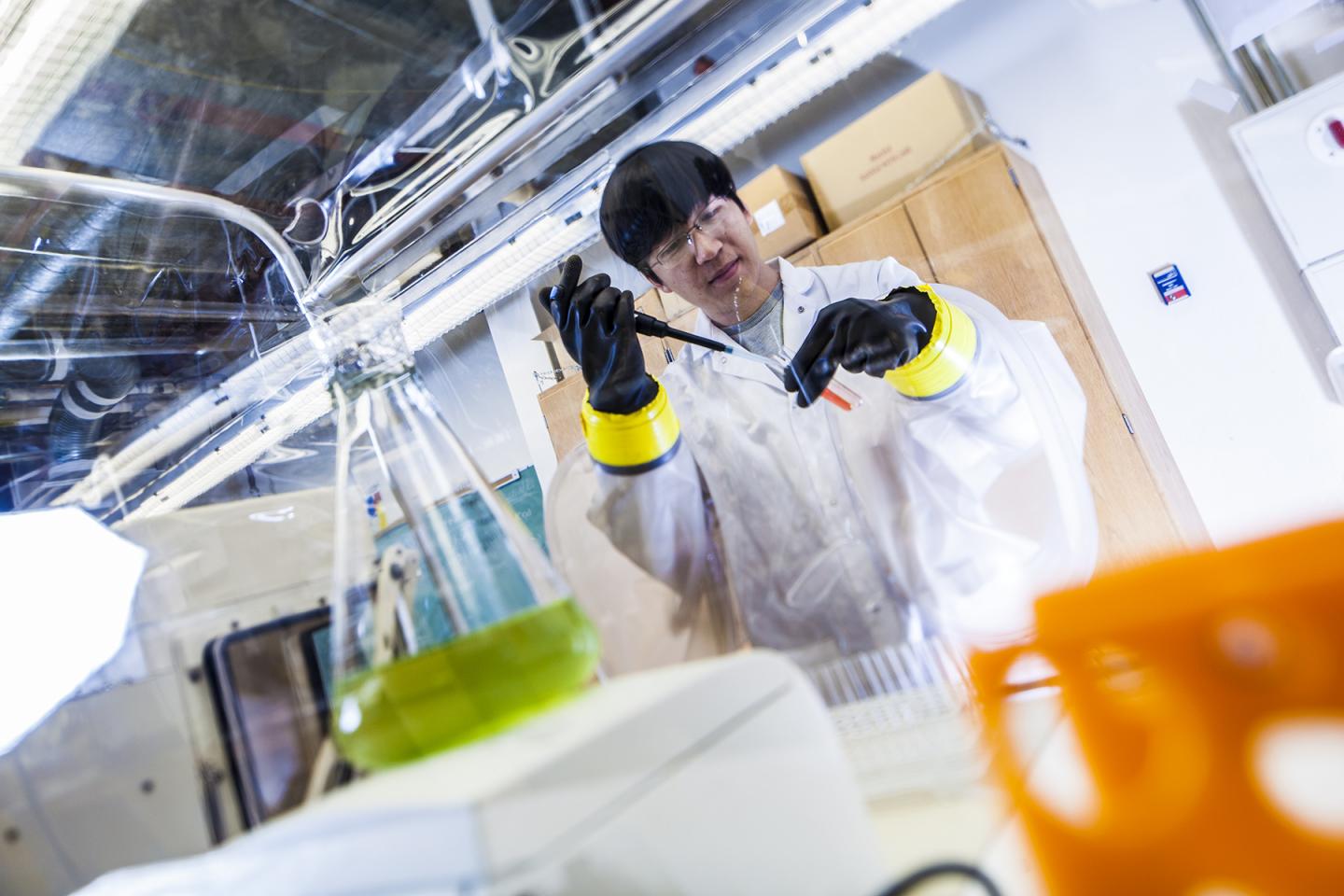
Credit: Photo courtesy of University of Nevada, Reno
We all like to keep things clean, and disinfectants help that happen. Unfortunately, one of the most widely used antimicrobial products in use since 1964, triclosan, is also one of the top 10 environmental contaminants in rivers – possibly disrupting the endocrine systems of wildlife and causing toxic effects to their reproduction and development. Now, a new study at the University of Nevada, Reno has found a potential way to reduce the presence of the antimicrobial that is also linked to problems with antibiotic resistance.
"The results are promising that we gained better understanding about how triclosan is degraded in the natural environment, and can potentially find a way of removing the contaminant from the environment and in the long term fighting the antibiotic resistance problem," Yu "Frank" Yang, assistant professor of environmental engineering at the University, said.
Yang and his team's research on how to reduce the presence of triclosan in the environment was recognized among Emerging Investigator Series by the journal Environmental Science: Processes & Impacts, a publication of the Royal Society of Chemistry, and published in the April edition as the inside front-cover story. The article describes how the triclosan, used for things like hand sanitizer, detergents, soaps and paints, can be degraded faster in the environment through a process with a combination of metal-reducing bacterium and natural organic matter.
While the nation is phasing out triclosan and finding replacements for the detergents, it's pervasive in the environment and is persistent under certain environmental conditions, Yang said. Because of its persistence and lack of efficient removal processes in most water treatment plants, triclosan has been widely detected in natural waters, soils, sediments and biosolids.
"Antibiotic resistance induced by antimicrobial or antibiotic agents is a global problem, if they are not degraded rapidly, then bacteria in the environment get exposure and develop resistant genes and then we can't fight it," Yang said. "If we can completely understand the degradation of antimicrobial agent, we can provide a treatment process in engineered and natural environments."
The team tested the matrix of a bacteria strain mixed with the organic material to find the condition that degraded triclosan the fastest. Yang's research found a mixture that reduced the half-life of triclosan to about 10 hours. The overall outcome is determined by the concentration of organic material, microbial activities and the chemistry of the water.
"Further study and development are needed, and we would like to fully understand the degradation pathways of emerging organohalides and work out cost-effective removal strategies," Yang said. "Both are challenging tasks."
The journal Environmental Science: Processes & Impacts recognized Yang, who is also a member of the College of Science's Global Water Center, for his work and honored him with the distinction of "Emerging Investigator." His paper is part of their 2017 "Emerging Investigator Series" which highlights "the best and brightest early career scientists in the environmental chemical sciences."
The journal website explains the "Emerging Investigator" distinction "showcases the high quality research being carried out by researchers in the early stages of their independent careers. It highlights up-and-coming scientists who are internationally recognized for making outstanding contributions to their respective fields."
In early April, Yang and his group presented this project and other work in nine presentations at the American Chemical Society's 2017 spring meeting in San Francisco, California.
He was also selected in early April by the U.S. National Committee for International Union of Pure and Applied Chemistry as a 2017 Young Observer for the organizations General Assembly and Global Congress in São Paulo, Brazil, this July.
He has been at the University of Nevada, Reno since September 2013 as an assistant professor in the Department of Civil and Environmental Engineering. He received his doctorate degree from Peking University, China. Since he joined the University, he has secured more than $1 million of federal research grants as principal investigator and Co-PI, and published 14 peer-reviewed manuscripts in top-tier journals in the area. His research is mainly focused on the molecular-level environmental chemistry for critical environmental issues, including carbon cycles and emerging pollutants.
The "Dual Role of Organic Matter in the Anaerobic Degradation of Triclosan" study was supported by the University of Nevada, Reno Startup Fund, the Department of Energy, the U.S. Department of Agriculture and the China Scholarship Council for the support of Lin Wang, a member of the research team.
###
Media Contact
Mike Wolterbeek
[email protected]
@unevadareno
http://www.unr.edu
############
Story Source: Materials provided by Scienmag





